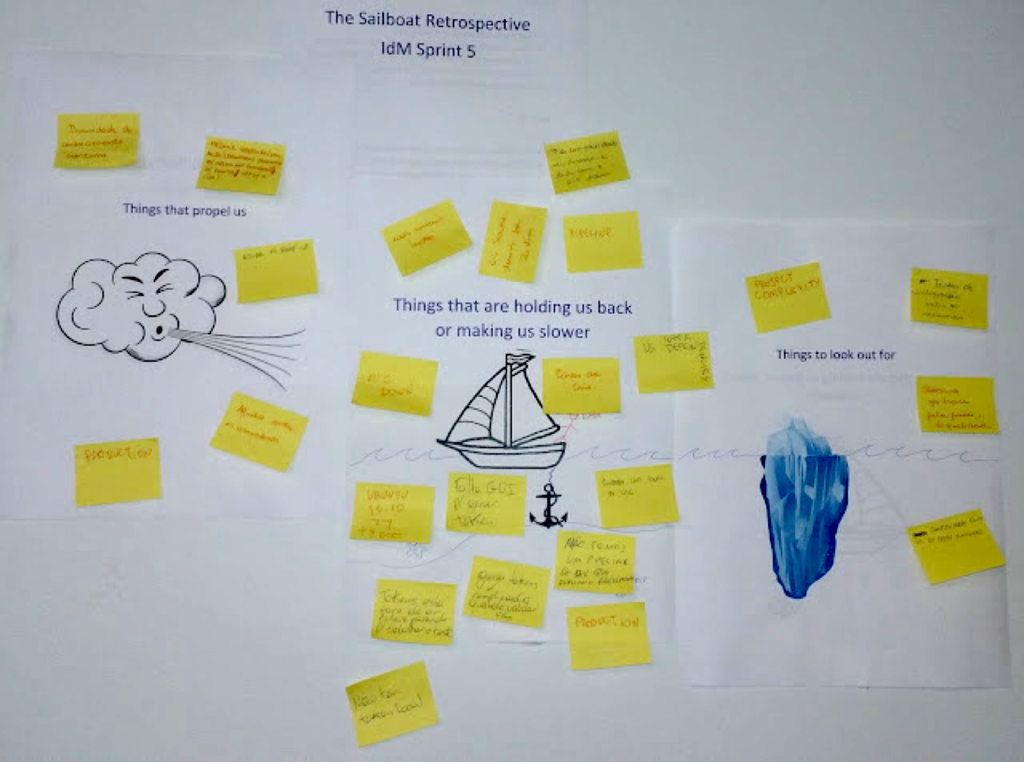- PagerDuty /
- Blog /
- Best Practices & Insights /
- 4-Step Sailboat Retrospective for Smooth Sailing
Blog
4-Step Sailboat Retrospective for Smooth Sailing
Do you like sailing? Personally, I’m not a fan—not without 10 Dramamine tablets ready to go in my bag, anyway. But whether you’re a fan of sailing or not, you may find the Sailboat Retrospective, a simple but effective Agile retrospective, extremely useful.
This retrospective technique uses a sailboat as a metaphor for the team. The idea is that the team is on a sailboat, heading towards their goal while dealing with winds and icebergs along the way. Winds help propel the boat forward but obstacles such as pirates, rocks, and stubborn anchors represent the risks that the team might encounter that could slow them down or even stop them from getting to where they need to be.
In short, the Sailboat Retrospective helps teams define where they want to go by enabling them to identify what slows them down and what helps them achieve their objectives. (You can even use this exercise to gather insights for Sprint or Release Retrospectives!) I’ve used it here at PagerDuty to great success and thought I’d share my four-step approach.
Step 1: Set the Stage
For co-located teams, draw a picture of a sailboat floating in water, and fill half the space above and half below the water with the sun, clouds, rocks, and a couple of islands—or you can simply print pictures and just attach them to the board or any available wall space. I prefer to print pictures because I am not very good at drawing.
For distributed teams, create a Trello board with a sailboat background. Then create a list for of the following categories and open a card under each of them: sunshine, anchors, propel it forward (wind), and rocks.
Note: The original Sailboat technique doesn’t have a sunshine category—I added it to help my teams focus on the good things and also give them a feeling of accomplishment as most teams should understand that there are already things that work just fine. And it’s definitely worth the time to help the team to build on this base.

- Sunshine: Things that make the team happy.
- Anchors: Everything that slows the team down on their journey (aka impediments that are holding them back).
- Winds and Clouds: Things that help the team and propel them forward to reach their goal.
- Rocks and Pirates: Obstacles and risks that could stop the team getting to where it needs to be. (Some teams find this category really helpful in helping identify things that are not an issue right now but can become an issue later.)
Step 2. Brainstorm
Ask the team to silently brainstorm for about 5-10 minutes about the following and write their answers on sticky notes or Trello cards:
- What makes them happy?
- What’s slowing them down?
- What’s propelling them forward?
Step 3. Gather Data
Ask the team to group sticky notes / Trello cards that seem related and encourage them to discuss their cards. You may want to give each person five minutes to read their ideas out loud, then spend some time discussing how can the team mitigate the risks that were identified.
Step 4. Decide What to Do
At this point, the Agile Coach can discuss with the team about how they can continue to practice what’s written under the clouds/winds area—i.e., the things that are propelling the team forward. Then the team should discuss how they can mitigate the identified risks and decide which are the most important issues slowing them down. If they are unable to come to an agreement, ask them to vote for the group or individual sticky notes they think should be worked on in the Anchors and Rocks categories. In the end, the team can define what steps can be taken to fix the problem, and close the retrospective.
At PagerDuty, one of our favorite sayings is: “It takes a village.” And that’s definitely true when manning a large sailboat—or when implementing various retrospectives as part of building a successful Agile process. For us, we learned that by taking a tried-and-true technique and tweaking it slightly to fit how our team works, we’ve seen a great deal of success!
Have you used the Sailboat Retrospective? We’d love to hear your thoughts about the technique!


